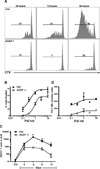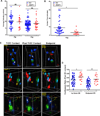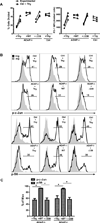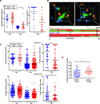Multistage T cell-dendritic cell interactions control optimal CD4 T cell activation through the ADAP-SKAP55-signaling module
- PMID: 23918975
- PMCID: PMC3772631
- DOI: 10.4049/jimmunol.1300107
Multistage T cell-dendritic cell interactions control optimal CD4 T cell activation through the ADAP-SKAP55-signaling module
Abstract
The Ag-specific interactions between T cells and dendritic cells progress through dynamic contact stages in vivo consisting of early long-term stable contacts and later confined, yet motile, short-lived contacts. The signaling pathways that control in vivo interaction dynamics between T cells and dendritic cells during priming remain undefined. Adhesion and degranulation promoting adapter protein (ADAP) is a multifunctional adapter that regulates "inside-out" signaling from the TCR to integrins. Using two-photon microscopy, we demonstrate that, in the absence of ADAP, CD4 T cells make fewer early-stage stable contacts with Ag-laden dendritic cells, and the interactions are characterized by brief repetitive contacts. Furthermore, ADAP-deficient T cells show reduced contacts at the late motile contact phase and display less confinement around dendritic cells. The altered T cell interaction dynamics in the absence of ADAP are associated with defective early proliferation and attenuated TCR signaling in vivo. Regulation of multistage contact behaviors and optimal T cell signaling involves the interaction of ADAP with the adapter src kinase-associated phosphoprotein of 55 kDa (SKAP55). Thus, integrin activation by the ADAP-SKAP55-signaling module controls the stability and duration of T cell-dendritic cell contacts during the progressive phases necessary for optimal T cell activation.
Figures







References
Publication types
MeSH terms
Substances
Grants and funding
LinkOut - more resources
Full Text Sources
Other Literature Sources
Molecular Biology Databases
Research Materials
Miscellaneous

